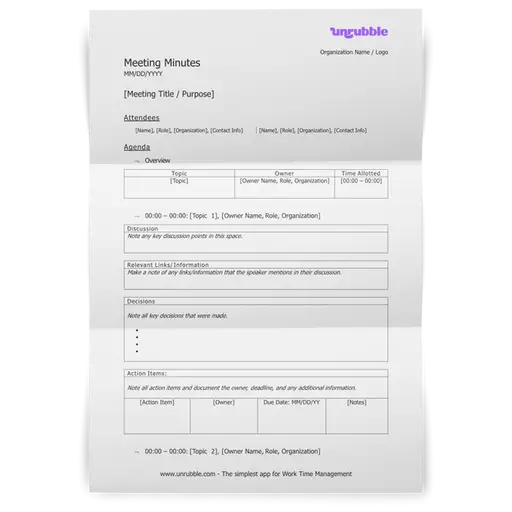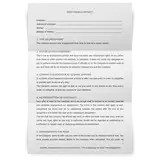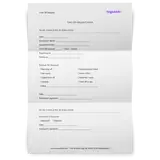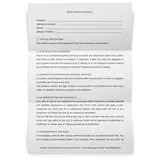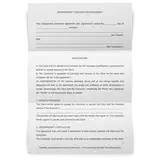Having a quality meeting minutes template is a great start for establishing good record-keeping practices at any organization.
However, in order to be the most effective, you also need to put the right processes in place. Here are five practical tips for how you can get the most out of your organization’s minute-taking process.
Here’s a sample Meeting Minutes template that can be easily customized and adapted to meet your requirements. It’s free to download and use.
Establish who will take the minutes
Not all teams have a dedicated executive assistant who can be present at each meeting to take detailed minutes. And while it may be tempting to rotate the task to a different person for each meeting, your team is actually much better off assigning the responsibility to only a few.
This not only allows those responsible to become good at taking minutes, it also allows them to understand your meeting minutes format and processes inside out – saving everyone time and effort.
When looking for the right people in your team to dedicate this responsibility to, consider those who:
- Are detail-oriented, focused, and good listeners
- Rarely call in sick and are reliable
- Understand a range of the topics being discussed
- Have capacity in their workload to handle the excess leg work
- Impartial to office politics
Once you have your select group of minute-takers, set up a rotating schedule. It’s also a good idea to have back-ups – just in case!
Distribute and seek prompt approvals
Minutes should not be filed away after a meeting never to be seen again! It’s important to have a clear follow-up and approval process so that everyone has the chance to get the record correct.
After each meeting, have the dedicated minutes-taker send an email to everyone in attendance and ask for approval from relevant parties.
To make this easy, your meeting minutes template should include a place for leaders to sign off and approve of the minutes. This is especially critical after meetings involving multiple divisions, departments, and organizations. This not only keeps your team covered in the event of a future dispute, it guarantees that all stakeholders are on the same page with what was discussed and decided.
Have a storage plan
Once the minutes are approved, they should then be properly filed and stored within your organization�’s storage platform under one folder.
All file names should follow a similar format, and they should be neatly organized by date. You should also be considerate of those outside the organization who may not have access to your internal drive. Make sure that these parties are given a copy of the minutes. Or, store them on a shared folder on the cloud.
This folder is also a great place to keep your corporate minutes template on hand. This will definitely help when training new hires on how to take minutes.
Evaluate and adjust your meeting minutes template
Even the most advanced and complex board meeting minutes template may need to be adjusted over time. You want your minute-takers to be able to document what happens during the meeting efficiently and clearly, and your meeting minutes template should help to facilitate that process. Whether you need to scale back or add in more structure – do what feels right for you.
Remember, it’s only the best meeting minutes template if it works exactly for your specific situation.
Consistency is key
No matter how perfect your meeting minutes sample is, the key to making it work for your organization in the long term is to be consistent.
That means being consistent with the:
- Template usage
- Individuals responsible for taking the minutes
- Approval and follow-up process
- Storage/filing process
By maintaining each of these points consistently over time, your organization will gradually build a high-quality library of records that can serve as a resource for reflection, verification, and progress tracking.
